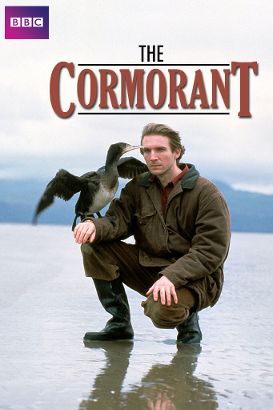 A very good, chilly and disquieting BBC telefilm, adapted from the popular novel by Stephen Gregory and starring a young Ralph Fiennes. It concerns an evil bird, but not of the standard THE BIRDS/JAWS variety, as the horror here is of a far stranger and more insidious sort.
A very good, chilly and disquieting BBC telefilm, adapted from the popular novel by Stephen Gregory and starring a young Ralph Fiennes. It concerns an evil bird, but not of the standard THE BIRDS/JAWS variety, as the horror here is of a far stranger and more insidious sort.
Stephen Gregory’s THE CORMORANT was extremely well received upon its 1986 publication (it was reprinted at least twice), and so was this 1993 BBC adaptation. It won two BAFTA awards and provided the then-unknown Ralph Fiennes (shortly before his breakthrough performance in SCHINDLER’S LIST) with an early role that showcased his considerable talents in full.
John Talbot has inherited a rural cottage from his uncle. John immediately moves into the place with his wife Mary and young son. But there’s a proviso to John’s uncle’s will: it states that John will have to take care of the deceased man’s Cormorant (a large ugly bird). The cormorant is shipped to the cottage in a large wooden crate on the very night the Talbots move in.
From the start the bird is a terror, flapping around the cottage, poking holes in things and crapping all over the place. When the bird pecks to death the family cat one night Mary decides she’s had enough, taking the boy and heading back to the mainland for Christmas. John stays at the cottage with the cormorant, and develops a relationship of sorts with the bird. He names it Archie and takes it for lengthy trips to the beach, where the cormorant dives for fish in the ocean.
Mary and the boy return, but don’t stay for long. Mary is convinced that the cormorant, which is revealed by a local bird specialist to be female, is exerting a malevolent influence over John. He for his part finds himself pondering childhood memories of his late uncle, an apathetic and possibly evil figure. Could that man’s spirit live on in the cormorant? Mary and son don’t stick around to find out, but John does, growing increasingly introverted and obsessive–as does his son, who even though he’s separated from the bird is clearly under its influence.
From the opening scenes, which skillfully intercut the Talbots settling into their new home with the shipping of the crate containing the cormorant, it’s clear that director Peter Markham (whose only directorial credit this is) knows what he’s doing. THE CORMORANT is taut and compelling, with shivery flashbacks of the protagonist’s childhood encounters with his creepy uncle and a propulsive climax marked (literally) by fire.
Of course, the pic has the rather tacky, low budget BBC telefilm look (marked by muted colors and sparse lighting) but succeeds nonetheless. This is due in no small part to Ralph Fiennes, who conveys an unforgettable portrait of obsession and madness. The cormorant for its part is also quite impressive; it can’t have been easy getting the bird to perform, but it showcases a wide range of movement and expressiveness.
The script by Peter Ransley follows the events of the novel extremely closely (although the book’s most disturbing passage, a bathtub sequence involving the Talbots’ young son and his mother, has been excised). This makes for a well-rounded, ominous narrative that works as both a supernatural chiller and a dark-hued character study.
Vital Statistics
THE CORMORANT
Holmes & Associates/BBC
Director: Peter Markham
Producers: Andrew Holmes, Ruth Kenley-Letts
Screenplay: Peter Ransley
(Based on a novel by Stephen Gregory)
Cinematography: Ashley Rowe
Editing: Tim Kruydenburg
Cast: Ralph Fiennes, Helen Schlesinger, Thomas Williams, Buddug Morgan, Derek Hutchinson, Karl Francis, Dyfan Roberts, Mici Plwm, Ray Gravell, Stewart Jones, Gwilym Evans
